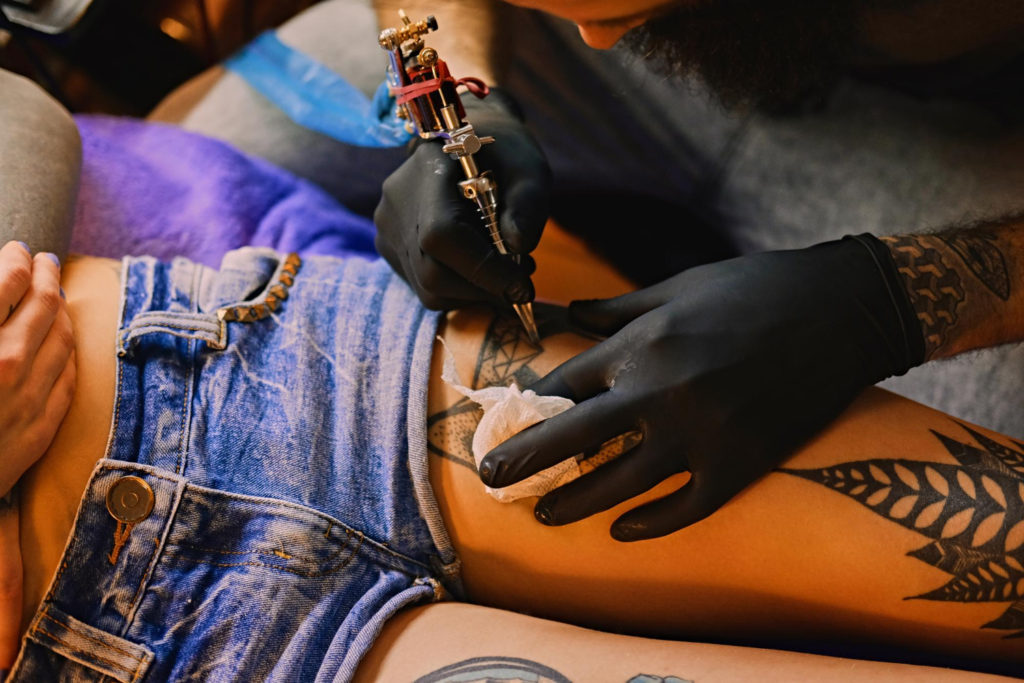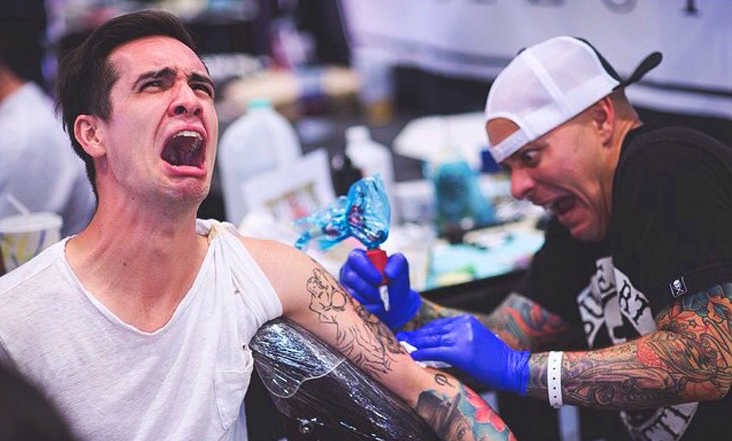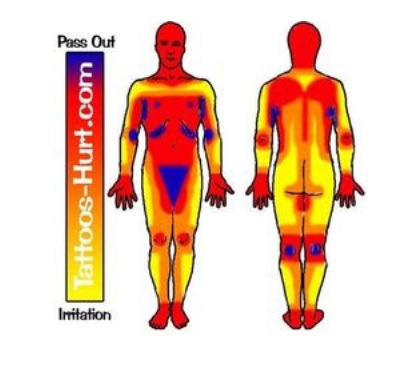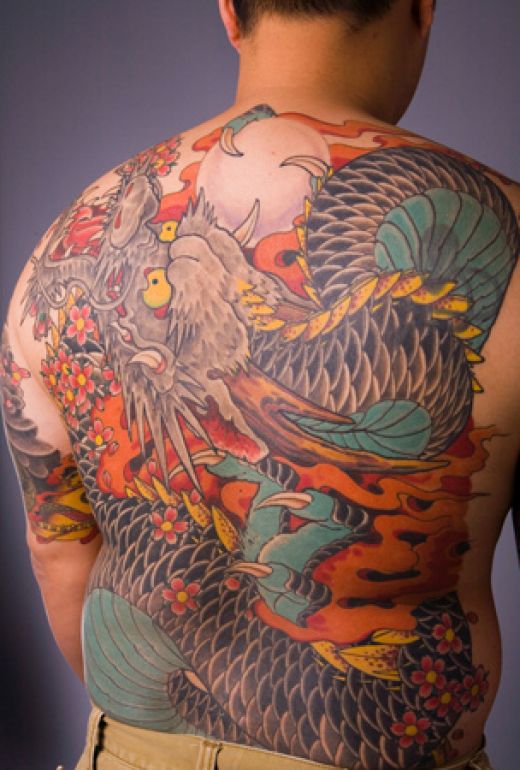It’s an art form that’s been for thousands of years and shows no signs of slowing down. If you don’t have them, chances are your friends or at least your favorite barista does — tattoos.
Humans have been marking their bodies with tattoos for thousands of years, be it for religious reasons, social status, or even punishment. Many female Egyptian mummies dating back to 2,000 BCE had been found with tattoos, as well as the Iceman discovered in 1991 that’s believed to have lived between 3,345 BCE and 3,300 BCE and has 61 tattoos in total.
Today people usually ink themselves for either self-expression or sentimental reasons. But for all the focus we put on the meaning of tattoos it’s less often that we think about how they got there in the first place and what keeps them on your skin…for you know, forever.
For today’s article, I am all about ink, so think carefully about what you want onto your body permanently as I tattoo some knowledge into your brains.
Diving Into the Art of Permanence
While tattoo styles like the American traditional come and go, the practice is as old as civilization itself. Decorative skin markings have been discovered in human remains all over the world, with the oldest found in the Peruvian mummy dating back to 6,000 BCE. But have you ever wondered how tattooing really works?
You may know that your skin is the largest organ in your body. It accounts for 15% of body fat and if you rip it off and stretched it out it would be two meters square. Humans also tend to shed their skin. We shed so much, that we lose one million skin cells every single day. So 50% of the dust in your house is probably made of dead skin cells, UGH!
So how come the tattoo doesn’t gradually flake off along with them? The simple answer is that tattooing involves getting pigment deeper into the skin than the outermost layer that gets shed. Throughout history, different cultures have used various methods to accomplish this, but the first modern tattooing machine was modeled after Thomas Eddisons’ engraving machine and ran on electricity.
Tattooing machines used today insert tiny needles loaded with dye into the skin at a frequency of 50 to 3,000 times per minute. The needles punch through the epidermis, allowing ink to sink deep into the dermis, which is composed of collagen fibers, nerves, glands, blood vessels, and more. By now you are probably thinking that the needles themselves are injecting ink into the skin, however, that’s far from the truth. The ink is actually held between the needles, similar to paint on a paintbrush. After the needle punctures the skin, the ink between the needles gets drawn down.
When It Comes to the Permanence of Tattoos, You Can Thank or Blame Your Immune System.
Each time a tattoo needle pierces the skin, it makes a wound, which naturally causes your immune system to send cells called macrophages to that area to close up those wounds. When they get there, macrophages realize it’s not just a wound they need to deal with, but a foreign invader as well — the ink.
So, they try to get rid of it by eating it. Meanwhile, skin cells called fibroblasts begin to soak up the ink that macrophages didn’t get to. Some of those ink-filled macrophages and fibroblasts then get stuck in the dermis, which is actually what you are looking at when admiring a tattoo — the ink that’s trapped inside the cells that attempted to destroy it. Kind of like a little cell graveyard if you ask me. But what’s inside the ink that those little guys are eating and how safe is it? Keep reading to find out.
What Makes the Tattoo Ink Permanent?
Thousands of years ago when hipsters of the ancient eras were getting custom tattoos, artists use many different ingredients to achieve their perfect tattoos, from colors of natural products like copper, ash, graphite, tree bark, and woad.
Today, our inks have evolved. Tattoo artists use so many pigments for colors that if you have two different tattoos from two different places, there’s a chance that your ink from your right arm is made up of entirely different stuff than the ink in your left arm.
Still, no matter what the ink ingredients are, it’s a straightforward recipe — a solid pigment creates the color, which afterward is suspended in a liquid carrier. Liquid carriers can include one or a combination of the following:
- Water
- Witch hazel
- Glycerine
- Propylene
- Ethanol
There’s a wide variety of pigments too, such as browns, reds, greens, blues, violets, yellows, and whites. Even though the FDA doesn’t exercise regulatory authority over the pigments used in tattoo ink, when a problem associated with tattoo ink is identified, they do investigate.
On their website, the FDA claims that published research shows that some inks contain pigments used in printer toner and even car paint. A report from the European Commission showed that tattoo ink frequently contains hazardous chemicals like heavy metals and preservatives that could cause bacterial infection. Even more recent research has found that tattoo ink can sometimes travel to the lymph nodes which filter out substances as part of the immune system. Analysis of cadavers with tattoos showed enlarged and pigmented lymph nodes which researchers believe are from substances in the tattoo ink like iron oxide, nickel, chromium, or cobalt.
What’s a Health-Minded Person To Do if They Want to Get a Tattoo?
Well, you should avoid getting a tattoo with colors derived from heavy metals. Black may be the safest permanent tattoo ink and doctors recommend asking for black tattoo ink made of just carbon. For red, try to find a parlor that works with non-metallic organic pigments made of things like carmine, scarlet lake, sandalwood, or brazilwood. As for other shades, ask around for non-metallic alternatives.
Nevertheless, more studies still need to be made in order to understand the long-term effects of tattoos. Until then, you may want to ask your tattoo artist if the ink contains oxide particles. Lot’s to think about before you get your ink on, am I right? Until then, let’s learn more about the fading and erasing of tattoos.
Fading and Erasing of Tattoos
All in all, a complete epidermal regeneration requires two to four weeks, during which excess sun exposure and swimming should be avoided to prevent fading. Dermal cells, however, remain in place until they die. When they do, they are taken up by younger cells nearby, so the ink stays where it is.
Tattoos, however, can fade naturally over time. When the body reacts to the alien pigment particles, the immune system’s macrophages help to break them down gradually. Ultraviolet radiation can also contribute to pigment degradation, however, it can be prevented by wearing a tattoo sunscreen.
Other methods for preventing fading exists. Tattoo maintenance entails washing your tattoo with non-scented soap and drying it with a clean towel. Tap the tattoo to dry it out to prevent irritating the wounds and therefore accelerate healing. To keep the tattoo moisturized, use unscented tattoo cream. You should do this process for two weeks to help it heal, nothing too complicated right?
But if tattoos are embedded in your skin for life, is there any way to erase them? Technically yes. The first one is concealing your tattoo with makeup, and the other more painful one is called laser removal. How so? Well, a laser is used to penetrate the epidermis and blast apart underlined pigment colors of various wavelengths. The laser beam breaks the ink globules into smaller particles that can then be cleared away by macrophages.
Here’s a cool fact for you — the different colors in tattoos have to be removed using different color lasers. For example, red and blue are removed using a green laser, while the blue and green parts can be removed with a red laser. It all comes down to the way pigments absorb different colors of light. They are best removed by the color of light they absorb the most and because black absorbs the best, it is the easiest to remove.
While some color inks are harder to remove, others can even cause complications. For this reason, removing a tattoo is still more difficult than getting one, yet not impossible. So a single tattoo may not truly last forever, but tattoos have been around longer than any existing culture and their continuing popularity means that the art of tattooing is here to stay.
In Conclusion: Is the Permanent Way the Best Way?
Tattoos have a permanency that can be symbolically beautiful. Some even describe them as moving art pieces. Tattoos can also be a symbol of humiliation, horror, and defiance from the tattooing of slaves in Ancient Rome, criminals in Imperial China, to the tattooing of prisoners in concentration camps in World War Two.
Tattooing has actually come in and out of style based on traditions. There was a decline in tattooing in the past with the spread of Christianity across Europe, as Christianity deems marking the body as pagan.
Either way, tattooing won’t go away. How would they go away if they are permanently inked on your skin? So, yeah, permanency is something I admire about them in the first place. And I really do believe that tattoos will always be on the rise across the world and I am so happy to be a part of it.















